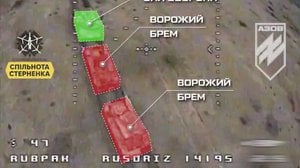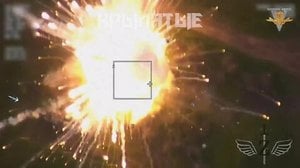
Gepard Says “Nein!” to Shahed Drone
Published 7 months ago
A Ukrainian Gepard Air Defense System engages Russian Shahed drones in the skies over Odessa. Built on a Leopard 1 chassis, the Flugabwehrkanonenpanzer Gepard boasts a turret with two 35mm guns with a combined rate of fire of 1,000 rounds per minute, search radar, tracking radar, and laser range finder. The system entered service in 1973 and was retired in 2010 in favor of a system built around the stinger missile. The Gepard was brought out of retirement in 2022 for service in Ukraine, with at least seven hulls rescued from the scrap heap so that they might be refurbished and sent into action.
Over the past two decades many western powers, including the United States, have retired gun-based anti-aircraft systems, instead focusing on missile-based platforms and systems with greater range. However, the drone threat has shown that this may have been premature. Missiles are large, difficult to build and resupply, and expensive to manufacture, and expending a missile on a relatively cheap drone is an uneven exchange. Gun-based platform like the Gepard may find employment in this brave new world of drone warfare.
About the Author

Cam
Cam served as an infantry officer in the Marine Corps, deploying to the Horn of Africa and participating in combat operations in Iraq. He currently works in the maritime industry and in the defense sector as an instructor of combined arms planning and operations. An avid sailor, Cam founded and directs a nonprofit that supports veterans and first responders through sailing.













